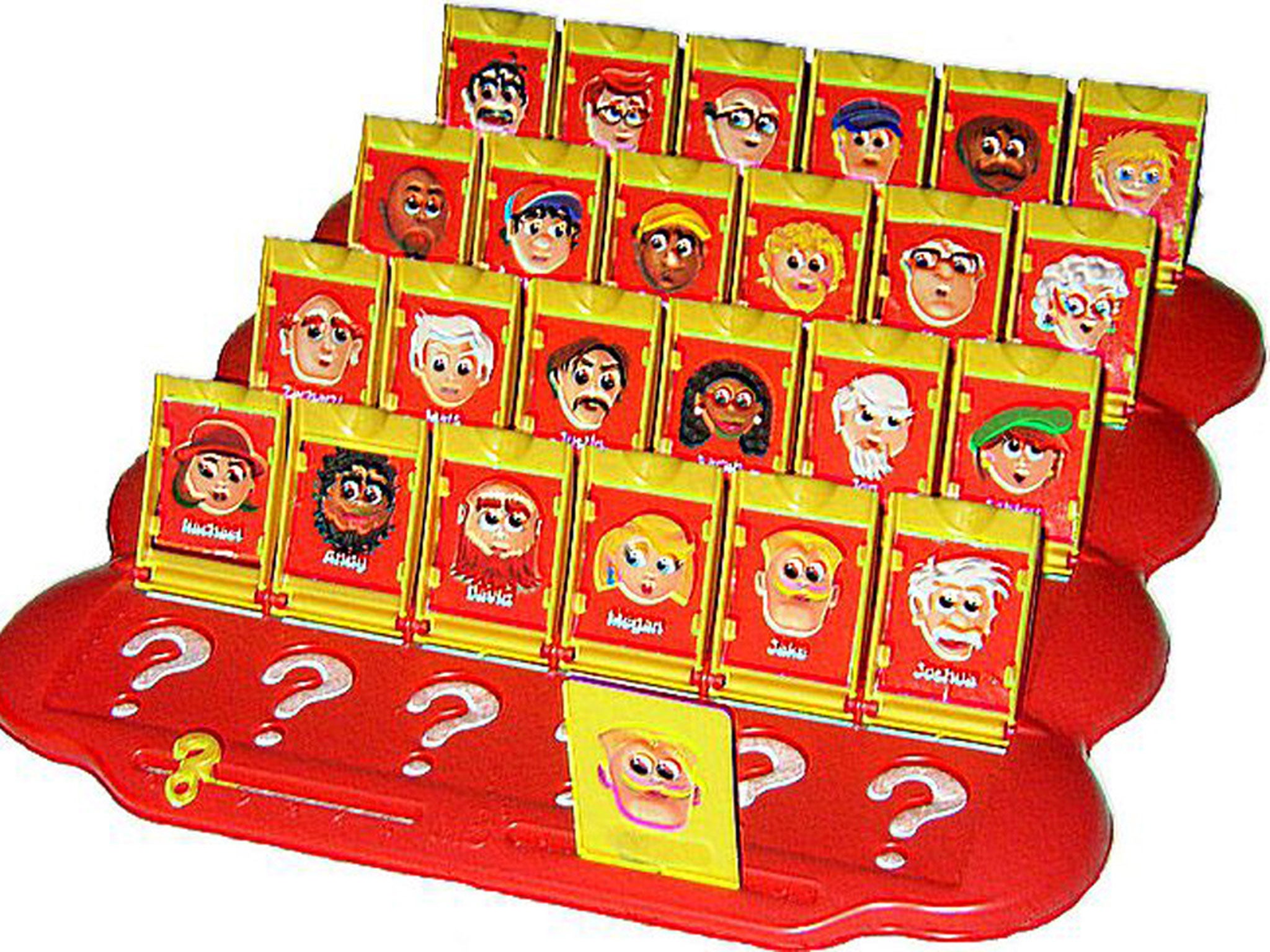Guess Who’s sexist? Classic board game’s gender bias leaves six-year-old fuming

Your support helps us to tell the story
From reproductive rights to climate change to Big Tech, The Independent is on the ground when the story is developing. Whether it's investigating the financials of Elon Musk's pro-Trump PAC or producing our latest documentary, 'The A Word', which shines a light on the American women fighting for reproductive rights, we know how important it is to parse out the facts from the messaging.
At such a critical moment in US history, we need reporters on the ground. Your donation allows us to keep sending journalists to speak to both sides of the story.
The Independent is trusted by Americans across the entire political spectrum. And unlike many other quality news outlets, we choose not to lock Americans out of our reporting and analysis with paywalls. We believe quality journalism should be available to everyone, paid for by those who can afford it.
Your support makes all the difference.It’s the hit guessing game which invites children to use their skills to solve a mystery. But a six-year-old girl left the games giant Hasbro struggling for an answer when she asked “why are there so many more boys than girls in Guess Who?”
An exchange posted on a blog between the US toy manufacturer and a girl who questioned the gender imbalance between the characters in her favourite game, spread virally across social media.
The Irish girl asked Hasbro to explain why her edition of Guess Who?, the game in which children try to identify the mystery person on an opponent’s card by asking simple questions, such as “are you wearing a hat”, contained cartoon images of 19 male characters but only five females.
Her email to Hasbro UK’s customer services team was posted by her mother, Jennifer O’Connell, a broadcaster and journalist, on her blog under the heading, “Hasbro knows all about selling to kids – and nothing much about talking to them.”
Her daughter wrote to ask Hasbro: “I am six years old. I think it’s not fair to only have 5 girls in Guess Who and 19 boys. It is not only boys who are important, girls are important too. If grown-ups get into thinking that girls are not important they won’t give little girls much care.”
She continued: “Also if girls want to be a girl in Guess Who they’ll always lose against a boy, and it will be harder for them to win. I am cross about that and if you don’t fix it soon, my mum could throw Guess Who out. My mum typed this message but I told her what to say.”
Hasbro replied with “an explanation which I hope your mummy will be able to explain to you.” Its answer however left many adults scratching their heads, let alone a six-year-old. “Guess Who? is a guessing game based on a numerical equation,” the company said. “If you take a look at the characters in the game, you will notice that there are five of any given characteristics. The idea of the game is, that by process of elimination, you narrow down who it isn’t, thus determining who it is.”
Hasbro concluded: “The game is not weighted in favour of any particular character, male or female. Another aspect of the game is to draw attention away from using gender or ethnicity as the focal point, and to concentrate on those things that we all have in common, rather than focus on our differences. We hope this information is of help to you.”
Replying on her daughter’s behalf, Mrs O’Connell said: “If anything, your response has left her more confused than before. She is a smart girl, but she is only six and still in senior infants at primary school, so she is a long way from being able to grasp concepts like numerical equations and weighting.”
Her mother asked: “Why is female gender regarded as a ‘characteristic’, while male gender is not?... She is now no clearer as to why there are only five female characters for her to choose from in her favourite board game, compared to the 19 male characters her brother can pick.”
Within hours of posting the exchange Mrs O’Connell received 30,000 views on her blog. Twitter users offered to complain to Hasbro over its “patronising, incomprehensible response.”
Guess Who?, a two-player game first manufactured in 1979 in the UK before being sold to the US, has previously received complaints over gender and ethnic bias in its choice of 24 images. Editions produced over the last decade have changed the faces and added more women.
Children can succeed in influencing a company’s products. Sainsbury’s renamed its “tiger bread” this year after a letter to the company from a three-year-old girl, saying the bread looked more like a giraffe, went viral.
The Journal of Personality and Social Psychology used a version of Guess Who? to test prejudice among a group of 100 undergraduates. Although the quickest way to eliminate characters would have been to employ race – by asking: “Is the character African American?” – only 10 percent of players were willing to do so.
Join our commenting forum
Join thought-provoking conversations, follow other Independent readers and see their replies
Comments